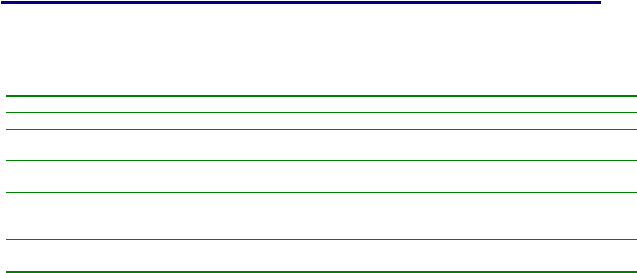
ZBasic System Library
168
ZBasic Microcontrollers
Type
Subroutine
Invocation
InputCaptureEx(pin, data, count, flags)
InputCaptureEx(pin, data, count, flags, timeout)
Parameter
Method
Type
Description
pin
ByVal
Byte
The input capture pin to use.
data
ByRef
array of
UnsignedInteger
The array in which pulse width information will be stored.
count
ByVal
int16
The number of pulse widths to store. This should be no
larger than the number of entries in the passed array.
flags
ByVal
Byte
A value of zero requests that a falling edge begin the
capture process while a value of 1 indicates a rising edge.
All other values are reserved.
timeout
ByVal
integral
If non-zero, this parameter specifies a timeout value that, if
exceeded, will terminate the input capture process.
Discussion
This routine collects timing data from a pulse train applied to the specified input capture pin and stores it
in the specified array. The stored data reflects the width of the successive high and low portions of the
pulse train. If any segment is longer than can be represented in a 16-bit value, the stored value will be
65535 (&Hffff) and the immediately following value, if any, will be meaningless.
Prior to commencing the input capture process all of the elements of the data array are initialized with the
value 65534 (&Hfffe). This fact can be used to determine the actual number of timing data stored in the
array during input capture.
The stored values represent the number of I/O Timer ticks (i.e. 1/F_CPU or about 67.8ns for 14.7MHz
devices) measured for each segment of the pulse train. However, the value of
Register.TimerSpeed1 may be changed to allow longer pulse widths to be measured. See the
section on Timers for more information.
Due to the overhead of servicing the input capture interrupt and possible RTC interrupts the shortest
interval (high or low segment) that can be reliably measured corresponds to about 300 CPU cycles (about
21µs for 14.7MHz devices). If an input waveform had a 50% duty cycle this would correspond to about
24KHz. Additional interrupt sources may increase the minimum interval that can be measured reliably.
If the optional timeout parameter is specified and is non-zero, the Input Capture process will be
terminated if N * 65536 I/O Timer ticks occur (where N is the value of the timeout parameter) before the
specified number of datapoints has been stored. This gives a range of possible timeout values from
about 4.5mS to 290 seconds with a resolution of 4.5mS (using the default value of
Register.TimerSpeed1) for 14.7MHz devices.
The calling task will be suspended until the specified number of datapoints has been stored, the timeout
value is exceeded or the task is resumed using ResumeTask(). Other tasks will be allowed to run but you
must be careful to not call any routines that may disable interrupts for long periods of time because that
could interfere with the accuracy of the input capture timing.
Resource Usage
This routine utilizes a timer to collect the timing information of the pulse train. See the section Input
Capture Timers for information on the valid input capture pins and the timer associated with each and the
ISRs utilized for native mode devices.